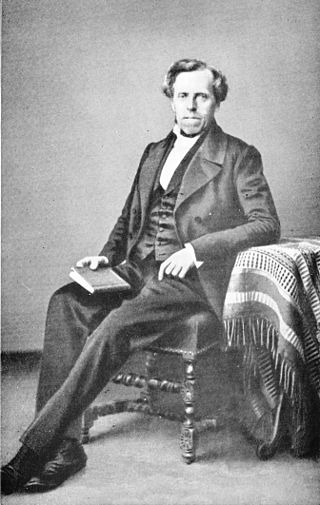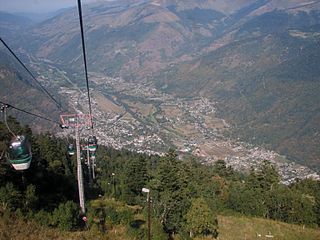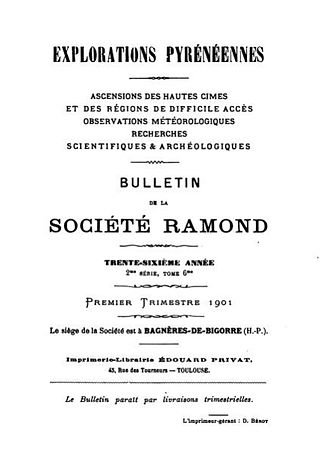
Haute-Garonne is a department in the southwestern French region of Occitanie. Named after the river Garonne, which flows through the department. Its prefecture and main city is Toulouse, the country's fourth-largest. In 2019, it had a population of 1,400,039.

Aneto is the highest mountain in the Pyrenees and in Aragon, and Spain's third-highest mountain, reaching a height of 3,404 metres. It stands in the Spanish province of Huesca, the northernmost of the three Aragonese provinces, 6 kilometres south of the France–Spain border. It forms the southernmost part of the Maladeta massif.

Bagnères-de-Bigorre is a commune and subprefecture of the Hautes-Pyrénées Department in the Occitanie region of southwestern France.
William Turton was an English physician and naturalist. He is known for his pioneering work in conchology, and for translating Linnaeus' Systema Naturae into English.

Barèges is a commune in the Hautes-Pyrénées department, administrative region of Occitania, southwestern France. It is situated in the valley of the Bastan on the former Route nationale 618 on the western side of the Col du Tourmalet.

Achille Guenée was a French lawyer and entomologist.

Bagnères-de-Luchon, also referred to as just Luchon, is a commune and spa town in the Haute-Garonne department in the Occitanie region of south-western France.

William Chapman Hewitson was a British naturalist. A wealthy collector, Hewitson was particularly devoted to Coleoptera (beetles) and Lepidoptera and, also, to birds' nests and eggs. His collection of butterflies, collected by him as well as purchased from travellers throughout the world, was one of the largest and most important of his time. He contributed to and published many works on entomology and ornithology and was an accomplished scientific illustrator.

Aurignac is a commune in the Haute-Garonne department in southwestern France, close to the Pyrénées. It was the seat of the former canton of Aurignac, which was composed of 19 communes. It is part of the ancient region known as the Comminges.

Louis François Élisabeth Ramond, baron de Carbonnières, was a French politician, geologist and botanist. He is regarded as one of the first explorers of the high mountains of the Pyrenees who can be described as a pyreneist.

Barbazan is a commune in the Haute-Garonne department in the Occitanie region of south-western France.

Eugène Trutat was a French naturalist, mountaineer, pyreneist, geologist and photographer, who was curator of the Museum of Toulouse.

The Société Ramond is a French learned society devoted to the study of the Pyrenees mountain range that forms a natural border between France and Spain. It is named after the French politician, geologist, botanist and explorer Louis Ramond de Carbonnières and is based in Bagnères-de-Bigorre in southwestern France.
Nérée is a given name. Notable people with the name include:

Joseph Louis Félix Garrigou was a French physician, prehistorian and hydrologist. He is known for his investigations of prehistoric artifacts and remains found in caves of southern France (Pyrenees). Also, he was the author of numerous writings on mineral waters from a chemical/medical perspective.
Extracts from Letters to Henslow, taken from ten letters Charles Darwin wrote to John Stevens Henslow from South America during the second survey expedition of HMS Beagle, were read to the Cambridge Philosophical Society on 16 November 1835 by Henslow and Adam Sedgwick, followed on 18 November by geological notes from the letters which Sedgwick read to the Geological Society of London. On 1 December 1835 they were printed as a pamphlet for private distribution.
Ulmus glabra 'Pyrenaica' is a local cultivar of the Wych Elm, described as Ulmus pyrenaica, the Pyrenees Elm, by de Lapeyrouse in Supplément à l'Histoire abrégée des plantes des Pyrénées (1818), from trees in the Port [:pass] de la Picade in the Basses-Pyrenees. Chevalier added a further description in 'Les Ormes de France' (1942), and a second provenance in the nearby Bagnères-de-Luchon area. Herbarium specimens are held in the Muséum national d'histoire naturelle in Paris, where U. campestris var. montana latifolia is given as a synonym.

Joseph, Pierre, Tancrède Latour was a French Romantic drawer and painter. His works are hosted by several museums in southern France.

The Thermes de Saint Gervais Mont-Blanc is a spa organized around thermal springs, located in the valley of the Arve, in the hamlet of Fayet, in the municipality of Saint-Gervais-les-Bains in Haute-Savoie.
















